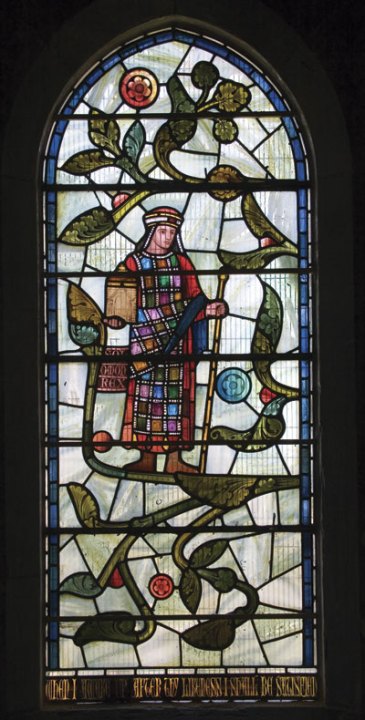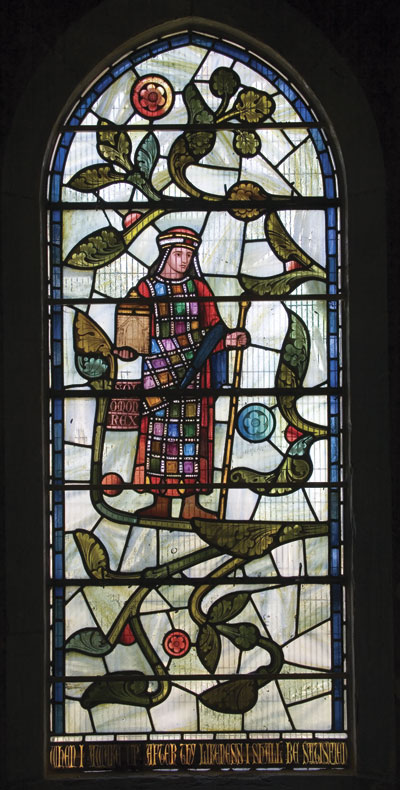It is 32 years since the first edition of this hefty book appeared in 1981. The original was based on the research materials amassed by Charles Handley-Read, the pioneer scholar and collector of Victorian decorative arts and one-time art master at Bryanston, who killed himself in 1971. Other people’s research notes are often not easy to use, and Joe Crook has greatly expanded that core material, and presented it in an illuminating schematic way.
This second, revised and enlarged edition, as well as correcting errors and fine-tuning matters of detail, incorporates many hitherto ‘lost’ art objects by Burges, rediscovered in the aftermath of the first edition. The rich ‘cream and brandy’ literary mannerisms have also been toned down slightly. Most importantly, this new edition includes some splendiferous colour pictures.
The publishers have produced an extremely handsome new tribute to Burges, the master of precious materials and glowing polychromy. The additional illustrations take advantage of the restoration in the intervening years of major Burges interiors, notably at Cardiff Castle (by the City Corporation) and Knights-hayes in Devon (by the National Trust); they make a good foil to the many historic black-and-whites.
The lucid structure and layout of the book are retained from the earlier version. The preliminary tribute to Handley-Read is also republished. The chapters are devised to cover the range of Burges’s genius. For he was not just an architect — one of the leading Victorian Goths — but a scholar, lecturer and brilliant decorative designer. His circle included the whole of Pre-Raphaelite London. ‘A strictly architectural study would have missed the point of his career.’ Crook sets out to place Burges’s design work in the context of High Victorian Romanticism, as proclaimed in the title. The portraits painted of an often eccentric cast of figures are a particular feature of the book.
The first chapter, ‘The Dream’, deals with the Victorian vision of the Middle Ages which was the background to Burges’s creativity, and is based on the theme of Crook’s Slade Lectures at Oxford in 1979. The second chapter deals with ‘the world of Billy Burges’, his pupils, patrons and friends. The third chapter, which gets to grips with the Victorian obsession with architectural style, is the most revised part of this new edition and reflects the author’s developing interest in the matter. There follow four chapters dealing with Burges’s own works, buildings and objects. Each of these can be read as an independent narrative. Particularly interesting are those dealing with the spectacular estate churches at Studley Royal and Skelton in Yorkshire, Cork Cathedral in Ireland, and his own home, Tower House in Kensington. All of these are masterpieces.
Much of Burges’s designing remained dreams on paper — he was an expensive architect — but are beautifully brought to life here in his fine drawings and watercolours. The pinnacle of Burges’s career was his employment by the 3rd Marquess of Bute at Cardiff Castle and Castell Coch, ‘Wagnerian creations for the richest man in the world’. These have a whole chapter to themselves, entitled ‘Feudal’.
This section was the highlight of the first edition and is the most exciting part of the new, with extra information about the Bute finances. Not only is this chapter very good on the Burges architecture, it is also a brilliant and amusing evocation of Lord Bute and his world, more so than the recent pedestrian and error-strewn biography by Mrs Hannah. Burges was not just architect to the Butes but a jolly friend and companion. Lady Bute exclaimed, ‘Ugly Burges who designs lovely things. Isn’t he a duck,’ in a letter to her sister.
Joe Crook’s exuberant and coruscating writing is ideally suited to describing Burges’s eclectic aestheticism. Every page produces a firework: shutters are ‘alive with quirkish patterns’, furniture sparkles with ‘domelets of mirrored glass’, entering a room is ‘like stepping into an upturned kaleidoscope’. The glitter is underpinned by massive scholarship (192 columns of footnotes). With its glorious illustrations, this is a very beautiful book and a compelling read. The first edition was good. This is better.







Comments